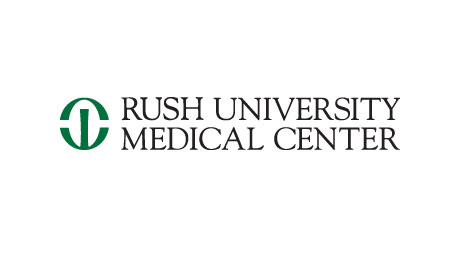A Randomized, Double-Blind Phase II Study of Adjuvant Pembrolizumab Versus Placebo in Head and Neck Cancers at High Risk for Recurrence- the PATHWay Study
| Status: | Recruiting |
|---|---|
| Conditions: | Cancer, Cancer, Cancer |
| Therapuetic Areas: | Oncology |
| Healthy: | No |
| Age Range: | 18 - Any |
| Updated: | 10/18/2018 |
| Start Date: | May 10, 2017 |
| End Date: | June 2021 |
| Contact: | Bernadette Libao |
| Email: | blibao@medicine.bsd.uchicago.edu |
| Phone: | 773 834 1758 |
A Randomized, Double-blind Phase II Study of Adjuvant Pembrolizumab Versus Placebo in Head and Neck Cancers at High Risk for Recurrence - the PATHWay Study.
A placebo-controlled, randomized study using adjuvant pembrolizumab treatment for one year in
order to potentially improve progression free survival in a squamous cell carcinoma of the
head and neck cohort at high-risk for recurrence.
order to potentially improve progression free survival in a squamous cell carcinoma of the
head and neck cohort at high-risk for recurrence.
Inclusion Criteria:
- Patients must have histologically confirmed head and neck cancer (Squamous cell
histology as well as HPV+ and/or EBV+ head and neck tumors), Stages IVA, IVB, and
select cases of Stage III.
- HPV status required prior to randomization for oropharyngeal primary tumors
- EBV status is required prior to randomization for nasopharyngeal primary tumors
- Completed curative intent therapy, without additional standard of care curative intent
therapy feasible within 20 weeks prior to study enrollment
- After prior curative intent treatment for HNC have estimated risk of recurrence ≥
40-50% and fall into one of the below categories (A, OR B, OR C, OR D, OR E). While
exact estimation of the risk of recurrence can be difficult the following categories
will be included reflecting patients at substantial risk for tumor recurrence or
already with early evidence of recurrence:
- A: Any of the below HNC patients are eligible for adjuvant treatment on this
protocol AFTER completion of curative intent therapy:
- HPV(-) HNC: N2C, N3, bulky N2B disease (≥ 5cm LN/tumor conglomerate).
- HPV(+) HNC: N2C, N3, AND ≥ 10 pack years of tobacco use
- HPV(+) HNC with multilevel nodal involvement, AND bulky N2B disease (≥ 5cm LN/tumor
conglomerate), AND ≥ 10 pack years of tobacco use
- EBV(+) NPC may be eligible if other criteria under A, or alternative criteria B, or C,
or D, or E are met.
- HNC with supraclavicular or mediastinal nodal involvement (any HPV or EPV status ) at
time of curative intent treatment and were treated as part of curative intent therapy
- Residual mass in area of prior tumor that on biopsy does not show residual tumor, is
equivocal/not highly-suspicious on imaging but remains of concern, requires close
follow-up AND is not resected/amenable to resection OR immediate palliative treatment.
- Non-responders to induction chemotherapy (PD on induction, or lack of tumor shrinkage
(< 15% per RECIST)
- Interrupted treatment course or lower than intended radiation dose - i.e. interruption
of radiation by ≥ 3 weeks (cumulative), or delivery of ≤ 50 Gy as part of a radiation
based treatment (that was NOT a de-escalation approach).
- B: Patient treated with salvage treatment (i.e. salvage surgery or
re-irradiation) for residual or recurrent tumor after prior radiation based
therapy (either HPV+ or HPV- or EBV+) AND not a candidate for additional curative
intent therapy (for various reasons including poor performance status,
comorbidities, refusal of patient, prior radiation or re-irradiation, etc).
Positive margins or residual tumor may still be acceptable (see D)). Patients
should also not be appropriate for systemic palliative therapy (e.g. in the case
of overt disease).
- C: Metastases or indeterminate distant lesions that are not appropriate for
either local radiation/SBRT treatment and also not appropriate for initiation of
palliative system therapy (e.g. in the setting of overt metastatic disease). Such
lesions should be negative/equivocal by PET imaging and if amenable negative by
biopsy, but remain of concern and require close follow-up
- D: Oligometastatic disease treated with SBRT or other curative-intent therapy
(e.g. surgery or RFA, etc) for oligometastatic disease.
- E: Microscopic or very low volume residual tumor after surgery or radiation based
treatment (including salvage treatment or SBRT for oligometastatic disease), AND
not a candidate for either additional curative intent therapy (for various
reasons including feasibility, poor performance status, comorbidities, refusal of
patient, prior radiation or re-irradiation, etc) AND also not a candidate for
systemic palliative therapy (for various reasons including
microscopic/non-(RECIST) measurable low volume disease). Very low volume disease
is defined as non-RECIST measurable).
- F: Patients with multiple recurrences or multiple primaries: specifically
patients who had malignant or pre-malignant tumors/changes (with severe dysplasia
present), who have undergone surgery ≥ 2 times, and currently do not have an
indication for additional (adjuvant) treatment such as radiation, or surgery, or
other treatment. This may include multiple recurrences/incidences of early stage
tumors or premalignant lesions, however at least one lesion needs to show
squamous cell carcinoma on pathology.
NOTE: There may be additional scenarios for patients that are considered very high risk for
disease recurrence and not appropriate for either curative or standard of care palliative
therapy. Such patients can be considered for enrollment after discussion and approval by
the PI and/or co-PI.
- Availability of tumor tissue (≥ 10 slides) for PD-L1, gene expression profiling (GEP),
and additional testing.
- Be willing and able to provide written informed consent/assent for the trial.
- Be 18 years of age on day of signing informed consent.
- Have a performance status of 0 or 1 on the ECOG Performance Scale. An ECOG performance
status of 2 is acceptable if the patient was ECOG 0/1 prior to curative intent therapy
and is in the midst of recovery from curative intent therapy
- Demonstrate reasonable organ function, all screening labs should be performed within
10 days of treatment initiation.
9. Female subject of childbearing potential should have a negative urine or serum
pregnancy test within 72 hours prior to receiving the first dose of study medication.
If the urine test is positive or cannot be confirmed as negative, a serum pregnancy
test will be required.
10. Female subjects of childbearing potential should be willing to use 2 methods of
birth control or be surgically sterile, or abstain from heterosexual activity for the
course of the study through 120 days after the last dose of study medication. Subjects
of childbearing potential are those who have not been surgically sterilized or have
not been free from menses for > 1 year.
11. Male subjects should agree to use an adequate method of contraception starting
with the first dose of study therapy through 120 days after the last dose of study
therapy.
Exclusion Criteria:
1. Is currently participating and receiving study therapy or has participated in a study
of an investigational agent and received study therapy or used an investigational
device within 2 weeks of the first dose of treatment.
2. Has a diagnosis of immunodeficiency or is receiving systemic steroid therapy or any
other form of immunosuppressive therapy within 7 days prior to the first dose of trial
treatment.
3. Has a known history of active TB (Bacillus Tuberculosis)
4. Has hypersensitivity to pembrolizumab or any of its excipients.
5. Has had a prior anti-cancer monoclonal antibody (mAb) within 4 weeks prior to study
Day 1 or who has not recovered (i.e., ≤ Grade 1 or at baseline) from adverse events
due to agents administered more than 4 weeks earlier.
6. Has had prior chemotherapy, targeted small molecule therapy, or radiation therapy
within 2 weeks prior to study Day 1 or who has not recovered (i.e., ≤ Grade 1 or at
baseline) from adverse events due to a previously administered agent.
- Note: Subjects with ≤ Grade 2 neuropathy or typical side effects from
radiotherapy are an exception to this criterion and may qualify for the study.
- Note: If subject received major surgery, they must have recovered adequately from
the toxicity and/or complications from the intervention prior to starting
therapy.
7. Has a known additional malignancy that is progressing or requires active treatment.
Exceptions include basal cell carcinoma of the skin or squamous cell carcinoma of the
skin that has undergone potentially curative therapy or in situ cervical cancer or any
tumors that are not likely to influence live expectancy in the subsequent 3 years
without active treatment (e.g. low grade prostate cancer in absence of therapy).
8. Has known active (=growing) central nervous system (CNS) metastases and/or
carcinomatous meningitis. Radiation or resected brain metastasis are acceptable if
clinically stable.
9. Has active autoimmune disease that has required systemic treatment in the past 2 years
(i.e. with use of disease modifying agents, corticosteroids or immunosuppressive
drugs).
Replacement therapy (eg., thyroxine, insulin, or physiologic corticosteroid
replacement therapy for adrenal or pituitary insufficiency, etc.) is not considered a
form of systemic treatment.
10. Has known history of, or any evidence of active, non-infectious pneumonitis.
11. Has a history or current evidence of any condition, therapy, or laboratory abnormality
that might confound the results of the trial, interfere with the subject's
participation for the full duration of the trial, or is not in the best interest of
the subject to participate, in the opinion of the treating investigator.
12. Has known psychiatric or substance abuse disorders that would interfere with
cooperation with the requirements of the trial.
13. Is pregnant or breastfeeding, or expecting to conceive or father children within the
projected duration of the trial, starting with the pre-screening or screening visit
through 120 days after the last dose of trial treatment.
14. Has received prior therapy with an anti-PD-1, anti-PD-L1, or anti-PD-L2 agent.
15. Has a known history of Human Immunodeficiency Virus (HIV) (HIV 1/2 antibodies).
16. Has known active Hepatitis B (e.g., HBsAg reactive) or Hepatitis C (e.g., HCV RNA
[qualitative] is detected).
17. Has received a live vaccine within 30 days of planned start of study therapy. Note:
Seasonal influenza vaccines for injection are generally inactivated flu vaccines and
are allowed; however intranasal influenza vaccines (e.g., Flu-Mist®) are live
attenuated vaccines, and are not allowed within 30 days prior to initiation of
treatment
We found this trial at
4
sites
Click here to add this to my saved trials
5841 S Maryland Ave
Chicago, Illinois 60637
Chicago, Illinois 60637
(773) 702-1000

Principal Investigator: Tanguy Seiwert, M.D.
Phone: 773-834-1758
University of Chicago Medical Center The University of Chicago Medicine has been at the forefront...
Click here to add this to my saved trials
Rush University Medical Center Rush University Medical Center encompasses a 664-bed hospital serving adults and...
Click here to add this to my saved trials
3451 Walnut St
Philadelphia, Pennsylvania 19104
Philadelphia, Pennsylvania 19104
1 (215) 898-5000

Phone: 215-614-1858
Univ of Pennsylvania Penn has a long and proud tradition of intellectual rigor and pursuit...
Click here to add this to my saved trials
